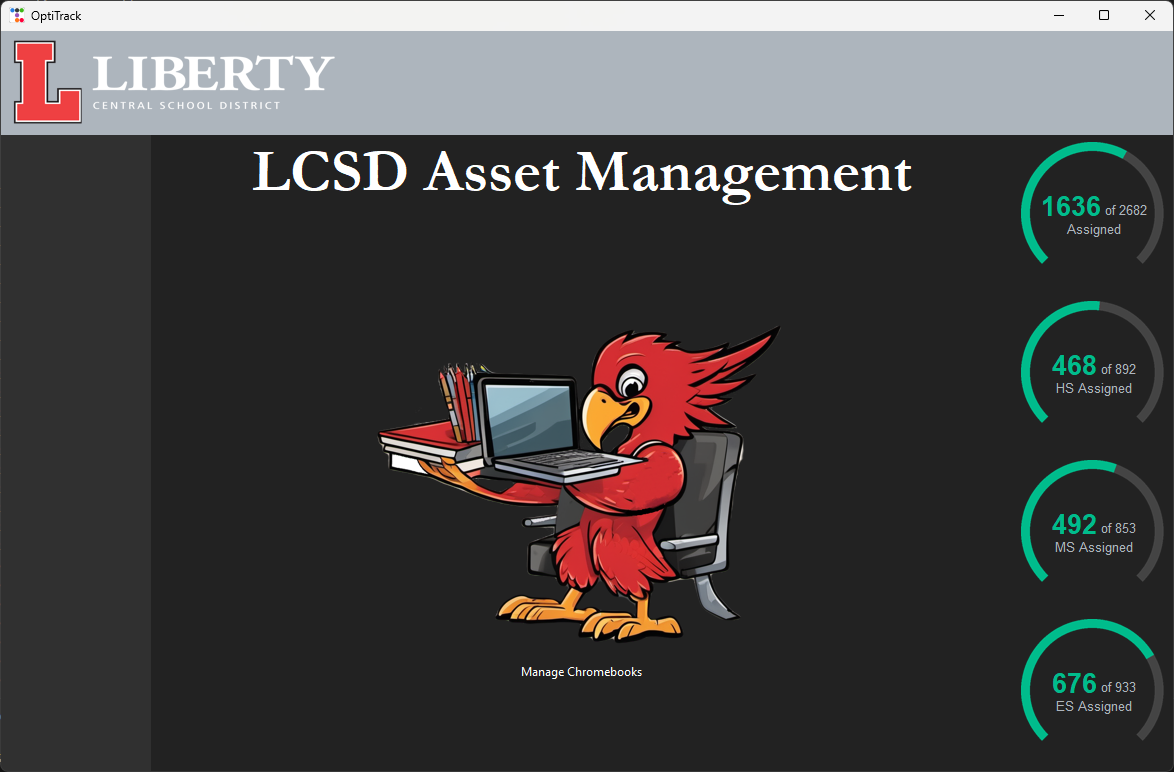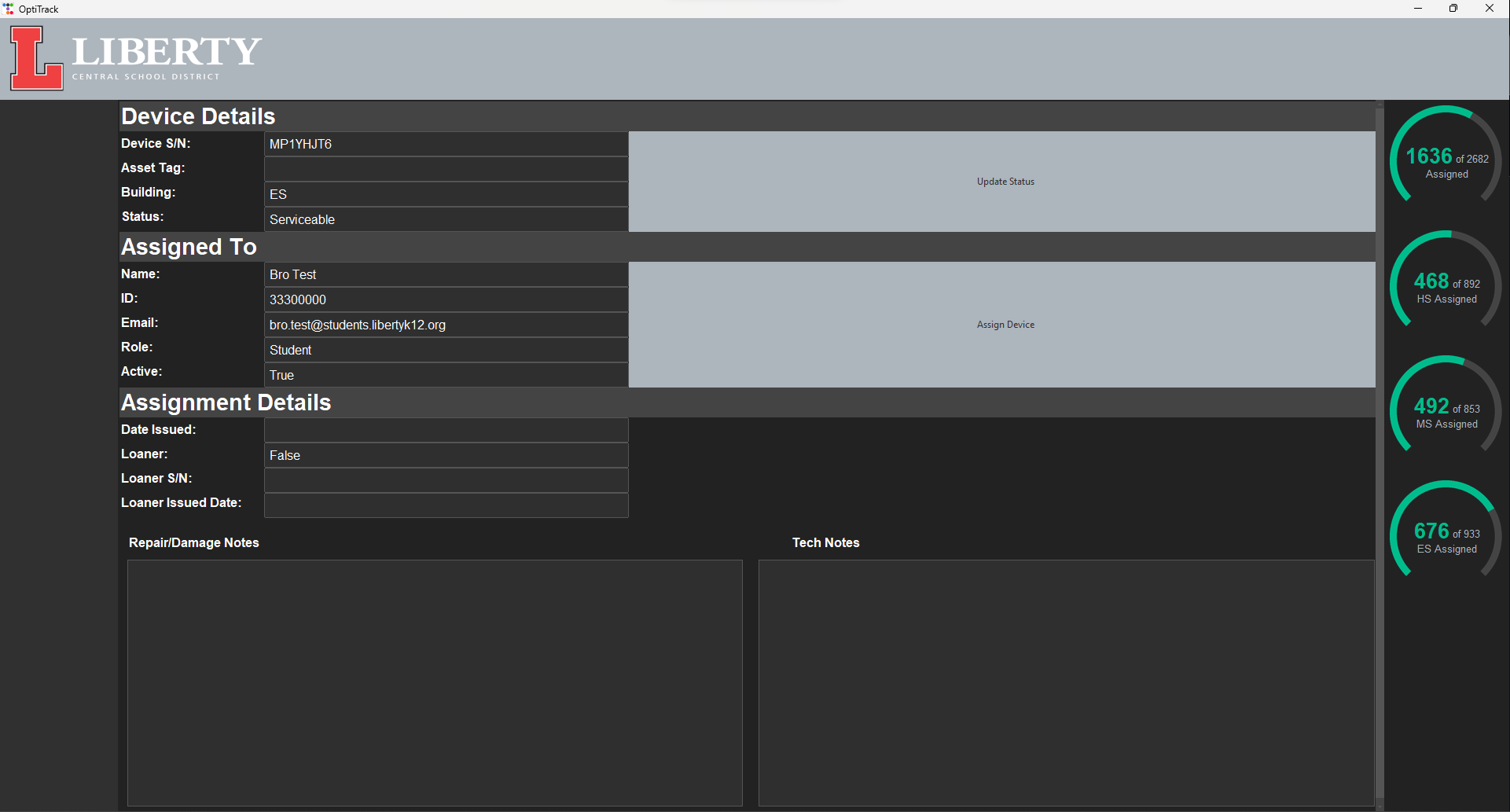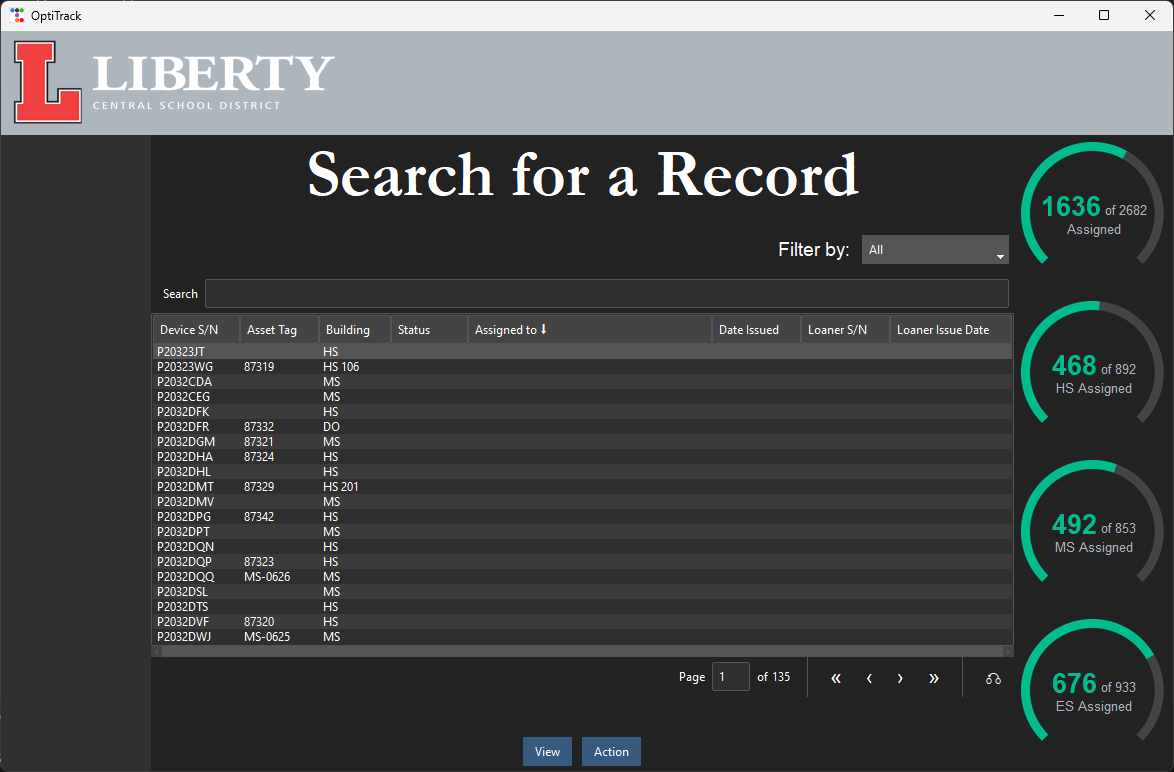OptiTrack
Languages, Libraries, and Technologies
- Python
- SQLalchemy
- ldap3
- tkinter
- ttkbootstrap
- SQL Server
- Google Cloud
Project Overview
This was a fun project. The school district I worked for had over $300,000 of Chromebooks that were unaccounted for. This was mostly due to poor asset management and the use of Google Sheets as a way to manage device assignments. That just doesn't work for 3,000+ students and staff especially when the district averages about 1,000 repair tickets a year for those devices. Once the software and its use were implemented, there were zero devices that were unaccounted for at the end of the school year.
My solution was to create a custom tailored desktop application and set up a virtual server to run the backend. The first iteration was pretty bare bones but it allowed us to assign devices to students or staff and quickly assign a loaner or a totally new device if repairs were needed. I started with a script to import all active Active Directory users daily into a SQL Server Express instance. The database was not large and there were not many concurrent users so the load was low. This provided an extremely cost effective solution to the district. I used the ldap3 and pandas libraries to accomplish the import. A simple star schema was used in the database.
The second iteration is where I had a lot of fun. I used the Google Workspace SDK to pull a list of the district devices. I then used SQLalchemy to build some models and manipulate the tables. This allowed automation of importing and keeping good data in the device table. I also implemented a feature to set a flag for devices in need of repair. This allowed our IT department to quickly add notes and keep student and staff abreast of repair status.
Challenges
My biggest challenge was creating a way to allow users to set their database and allow for different types of logins and database software. I wanted this to be available to other districts who did not have a good way of managing their devices. This meant I must set up a configuration file to build out the database with tables if they were not present but not overwrite any data or cause an error. I accomplished this by creating models with SQLalchemy. I built out logic and allowed users to save configuration settings so IT departments could set up the software and set inital configuration but end users just had to login. If they used SQL Server Windows Auth was an option since most districts are using AD.
The next challenge was keeping an updated count of device assignments and repairs. This was not necessary but something I thought was just cool. The problem was if the function was called to update those, all other processes stopped. I had to use multithreading to accomplish this.
My last major challenge was disabling the app or allowing to keep the connection to the server alive if the server connection was close to timing out. In the first iteration I noticed users were leaving the app open and receiving errors. An obvious connection timeout was overlooked in my testing. I set a function to run every few minutes to check connection to the server. Once again multithreading came in handy here.
I prefer web applications but this was an interesting project and I believe I learned more from this project than any other becuase I had to build out more functionality on my own.


